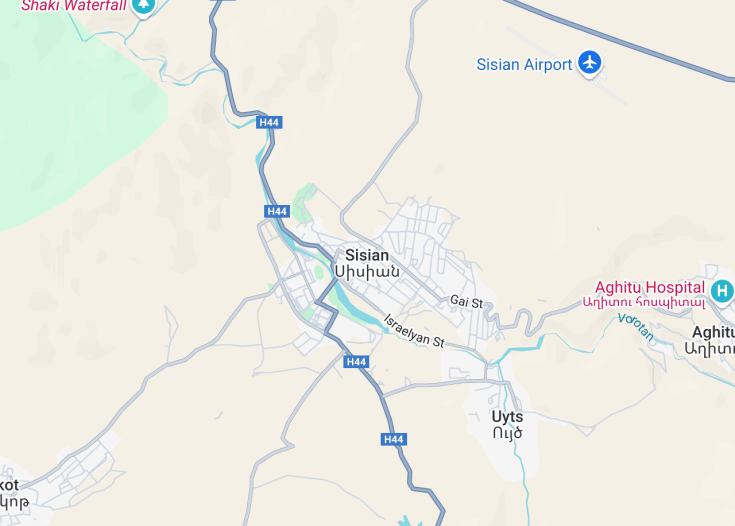Nestled in the picturesque Zangezur Mountains, Sisian is a captivating Armenian town renowned for its rich history and stunning natural landscapes. This hidden gem offers travelers a unique blend of ancient cultural heritage, featuring numerous Armenian Stonehenge monuments and medieval churches, set against a backdrop of rugged terrain and lush greenery. Ideal for history enthusiasts and nature lovers alike, Sisian provides a serene escape with countless opportunities for exploration and discovery.
When visiting Sisian, ensure to explore the Sisian History Museum to gain an insightful glimpse into the region’s vibrant past and cultural intricacies.
Plan your visit during the spring or early summer months to fully enjoy Sisian’s natural beauty and engage in outdoor activities in the pleasant weather.
Top things to do & see in Sisian
Select the following sights and activities to discover best tickets and tours available in Sisian.
Sisian: The Gateway to Ancient Armenia
| Country | Armenia |
| Time in Sisian | GMT+4 |
| Language spoken | Armenian |
| Population | 14,894 (Source: Statistical Committee of the Republic of Armenia, 2023) |
| Currency | Armenian Dram (֏, AMD) |
| Airports |
|
Sisian, a town in Armenia’s Syunik Province, provides a fascinating blend of ancient history and natural beauty. Known for its proximity to the megalithic complex of Zorats Karer and perched on the Vorotan River, Sisian is a key stop for travelers seeking to delve into Armenia’s rich archaeological heritage. The town itself offers encounters with medieval times, seen through sites like the Sisian History Museum and the nearby 7th-century Shaki Waterfall. With landscapes dotted with khachkars (carved cross-stones) and ancient stone constructions, Sisian invites explorers and historians alike to uncover the layers of stories encapsulated within its bounds.
Where is Sisian?
Sisian is situated in the picturesque Syunik Province in southern Armenia, nestled among the rugged terrain of the Lesser Caucasus mountains.
Distances:
| Route | Distance by car | Time by car |
|---|---|---|
| Yerevan to Sisian | 130 miles (210 km) | 3.5 hours |
| Gyumri to Sisian | 162 miles (260 km) | 4 hours |
| Kapan to Sisian | 70 miles (113 km) | 1.5 hours |
What is Sisian famous for?
Sisian is renowned for its rich history and archaeological sites, most notably the Zorats Karer—a prehistoric complex often referred to as the Armenian Stonehenge, suggesting its astronomical significance.
History
Ancient Era (Prehistory-4th Century AD)
The region surrounding Sisian, in the heart of Armenia’s Syunik Province, boasts a history that dates back to prehistoric times. Archaeological finds, including ancient tools and artifacts, suggest early human presence as far back as the Stone Age. This area became part of the Urartian Kingdom by the 9th century BC, a formidable precursor to the later Armenian civilizations.
Early Armenian Kingdoms (4th Century-9th Century)
With the decline of Urartu, the territory of modern-day Sisian fell under the dominion of the early Armenian kingdoms. By the 4th century AD, Christianity began to take root, eventually becoming the stronghold of Christian culture in the region. Monasteries, churches, and khachkars (cross-stones) started to appear, signifying deep spiritual and cultural development.
Medieval Period (9th Century-15th Century)
This period marked a significant chapter in Sisian’s history due to the rise of the Bagratuni Dynasty. The town was frequently embroiled in the regional power struggles that characterized medieval Armenia. Despite political upheavals, Sisian flourished as a cultural and religious center, with the construction of key architectural landmarks.
Ottoman and Persian Rule (16th Century-19th Century)
Sisian, like much of Armenia, came under the sway of both Ottoman and Persian empires. These centuries were marked by hardship and oppression, coupled with periods of relative autonomy, allowing for a continuance of cultural practices and the Armenian way of life.
Modern Era (20th Century-Present)
The 20th century was tumultuous for Sisian, witnessing both the horrors of the Armenian Genocide and the challenges of the Soviet era. Post-Soviet independence has seen Sisian slowly emerge as an important center for tourism and cultural preservation in Armenia. Today, the town is celebrated for its rich historical legacy and breathtaking natural scenery, continuing to forge a path that respects its ancient past while looking towards the future.
Visit Sisian
What to see and do in Sisian
Travelers to Sisian, Armenia, find themselves enveloped in a landscape rich with historical and natural attractions. Key sites include:
- Zorats Karer: Often referred to as the Armenian Stonehenge, this prehistoric archaeological site is renowned for its astronomical significance and is surrounded by mystery and beauty.
- Sisian History Museum: Hosting an array of artifacts that narrate the rich tapestry of the area’s past, from ancient to modern times.
- Shaki Waterfall: One of Armenia’s most beautiful natural wonders, providing a perfect spot for relaxation and photography.
Exploring these sites offers a deeper connection with the ancient and enduring spirit of Armenia.
Annual Events in Sisian
Sisian’s calendar brims with cultural and historical events. Notable among them are the Vardavar Festival, a traditional celebration involving water games, held in mid-summer, and the Harvest Festival in autumn, which showcases local agriculture and crafts.
Best time to visit Sisian
The optimal time to visit Sisian is between late spring and early autumn. The weather during these months is ideal for exploring the outdoor historical sites and natural landscapes. Winters can be quite harsh, making access to some attractions difficult.
Is Sisian worth visiting?
Sisian, with its compelling blend of historical depth and striking natural beauty, undoubtedly merits a visit. Whether you are a history enthusiast eager to explore ancient ruins and artifacts, or a nature lover looking to enjoy pristine landscapes and waterfalls, Sisian offers a unique and enriching experience that captures the essence of Armenia’s splendid heritage.










